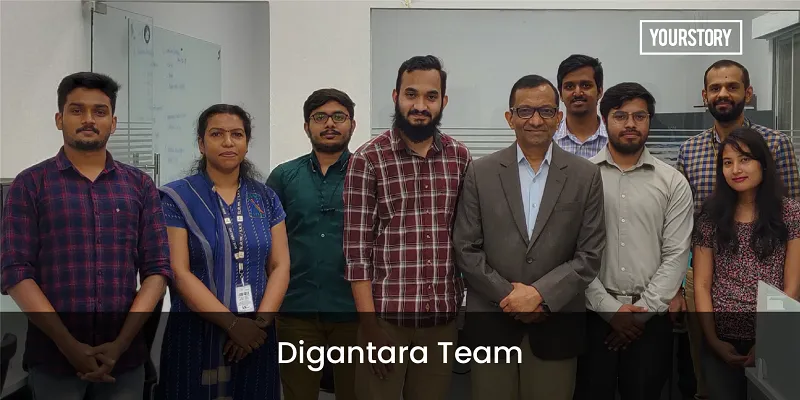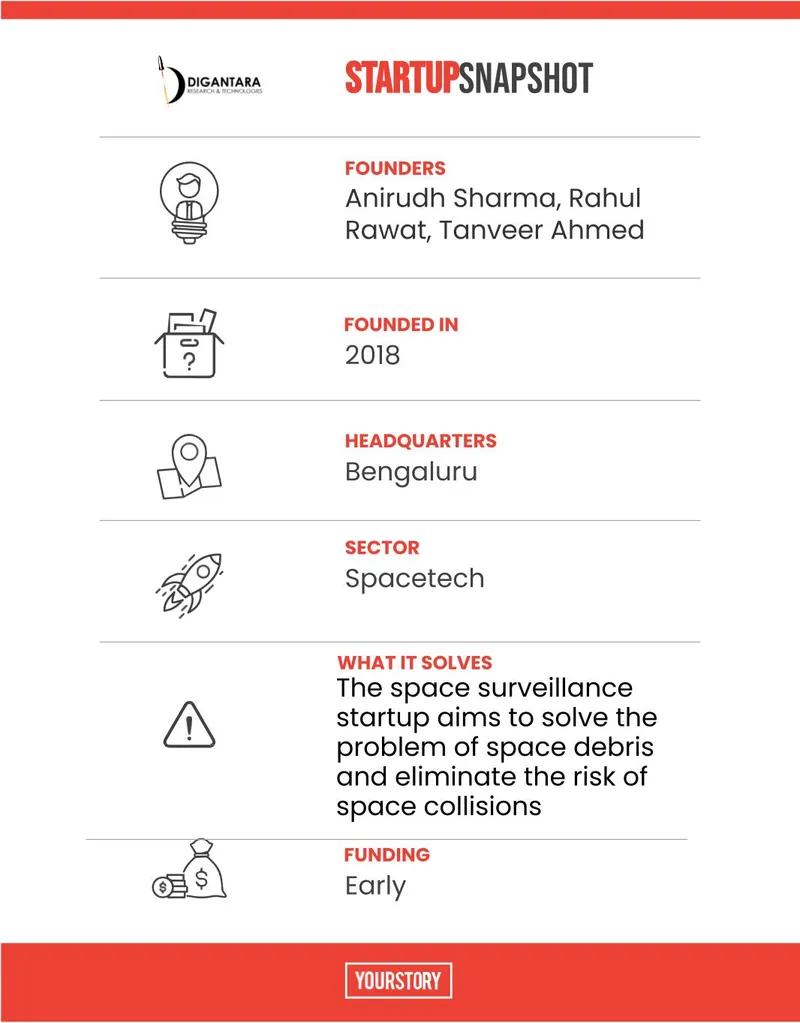[Tech50] Google Map for space: How spacetech startup Digantara is developing space traffic management
Anirudh Sharma of Digantara, one of YourStory’s Tech50 2021 startups, speaks on building a space company from what was conceptualised as a research project by engineering students, and mining the next big opportunity
In December 2018, when Anirudh Sharma, Rahul Rawat and Tanveer Ahmed founded , their business to business (B2B) and business to government (B2G) spacetech startup, the space sector was witnessing a boom. However, building a spacetech startup came with its own share of challenges.
The startup is focussed on space surveillance and space situational awareness (SSA), i.e. keeping track of objects in the orbit and predicting where they will be at any given time. It aims to solve problems related to space debris and eliminate the risk of collisions.
The biggest challenge was building credibility. “When a 17-18-year-old goes to an investor saying he wants to build satellites, he is not taken seriously. So, our first target was to build credibility among the investor community or in the market,” shares Anirudh as he delves into the journey behind the making of Bengaluru-based Digantara, which is also one of YourStory’s Tech50 2021’s most promising startups.
With an educational background in a non-aerospace domain and without the reputation of the Indian Institute of Technology (IITs) and the National Institute of Technology (NITs), Anirudh and Rahul were well aware of the difficulties of beginning a business in the space industry. “It was really difficult to break that barrier. So, we started building our credibility which fetched us our first grant of Rs 15 lakhs from the Indian Institute of Science (IISc) to build our first prototype," recalls Anirudh.
Taking us back to their student days when Anirudh and Rahul were into designing nanosatellites in India, Anirudh shares how the journey unfolded from a nascent idea to a full-fledged business model.
When one of the technologies they manufactured was appreciated by an international space agency, they were able to commercialise it and earn their first revenue. "That’s when we started this company for providing an invoice. As students, our aim was to sell space hardware and avionics,” recalls Anirudh.
As Anirudh and Rahul began to explore the problems and difficulties faced by stakeholders in the space sector, they realised the need to build a solution for space sustainability which they felt they could solve as a team.

“The first conference that we attended was in 2018 in Germany, and that gave us a better understanding of how big the problem was and why space sustainability is important for the future. While space debris is a hot topic now, those were only the early times,” shares Anirudh.
In 2019, they were selected as one of the top eight startups of the world, and the only startup idea from India at the International Astronautical Congress in Washington DC, the US.

Who will pay for space situational awareness technology?
The fact that they had secured a patent for their technology worked in their favour. But, despite the patent and the requisite knowledge and experience to construct the technology to track things in space, they still couldn't explain why someone would want to buy data from them. “So, we started reaching out to companies we thought could be our potential customer after we released our product in the market. We started taking inputs from them,” shares Anirudh.
Space is capital-intensive. “When we started, people had their doubts if someone could make money by tracking space junk, and why would someone pay for it. So, one of the biggest challenges that we had to crack was a business model or a use case, a commercial use case,” recall Anirudh.
From engineering to building a business
Anirudh explains how in the initial days, building a space company could make you feel like you are running a research and development (R&D) project and not a company.
“As engineers, it was really difficult for us to understand the business angle, we didn’t know what a venture capitalist would expect out of a spacetech startup and what could be its growth prospects and revenue projections. That’s where the incubation centre at the IISc turned crucial for us as we started learning about building a business model or understanding a venture capitalist’s perspective about how the space industry is going to be the next big thing,” explains Anirudh.
The most important part of the business was timing. “Had we started this company in 2020-21, we may not have had the same traction that we have today because we would have missed the bus,” Anirudh explains, reiterating the early mover advantage.
Building a cohort of beta customers
Earlier this year, Digantara raised $2.5 million seed funding from Kalaari Capital. Previously, the startup received multiple grants for development of their technology.
“We will be launching our satellite next year. Since we are providing services for space traffic management or space sustainability, we are working on building a cohort of beta customers who can use our data once we launch our first satellite,” explains Anirudh about the next milestones.
The big opportunity in space
There are 128 million objects in space out of which 3000 objects are active satellites. The world tracks only four percent of these objects and the rest 96 percent of these objects go untracked, explains Anirudh.
“What we are trying to do is build a Google Map for space, which can act as an ecosystem for the near future and companies can build solutions over our infrastructure,” he adds.
Edited by Anju Narayanan


![[Tech50] Google Map for space: How spacetech startup Digantara is developing space traffic management](https://images.yourstory.com/cs/2/0e302530227f11ec9e19b7c38d296967/FoundersDigantara2-01-1640169352923.png?mode=crop&crop=faces&ar=2%3A1&format=auto&w=1920&q=75)
![[Tech50] OTT for Bharat: How content startup STAGE is redefining the hyperlocal consumption game through Haryanvi dialect](https://images.yourstory.com/cs/2/0e302530227f11ec9e19b7c38d296967/StageFounders-1640090946554.png?fm=png&auto=format&h=100&w=100&crop=entropy&fit=crop)




